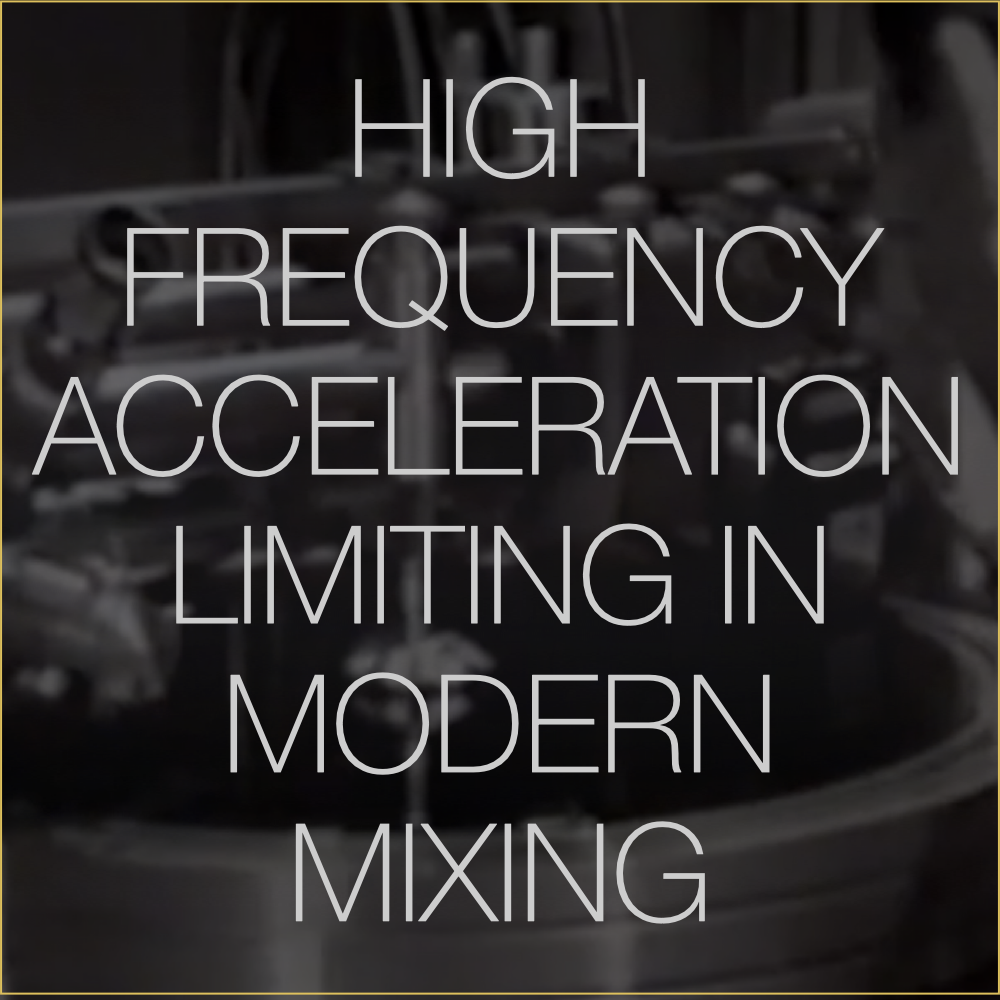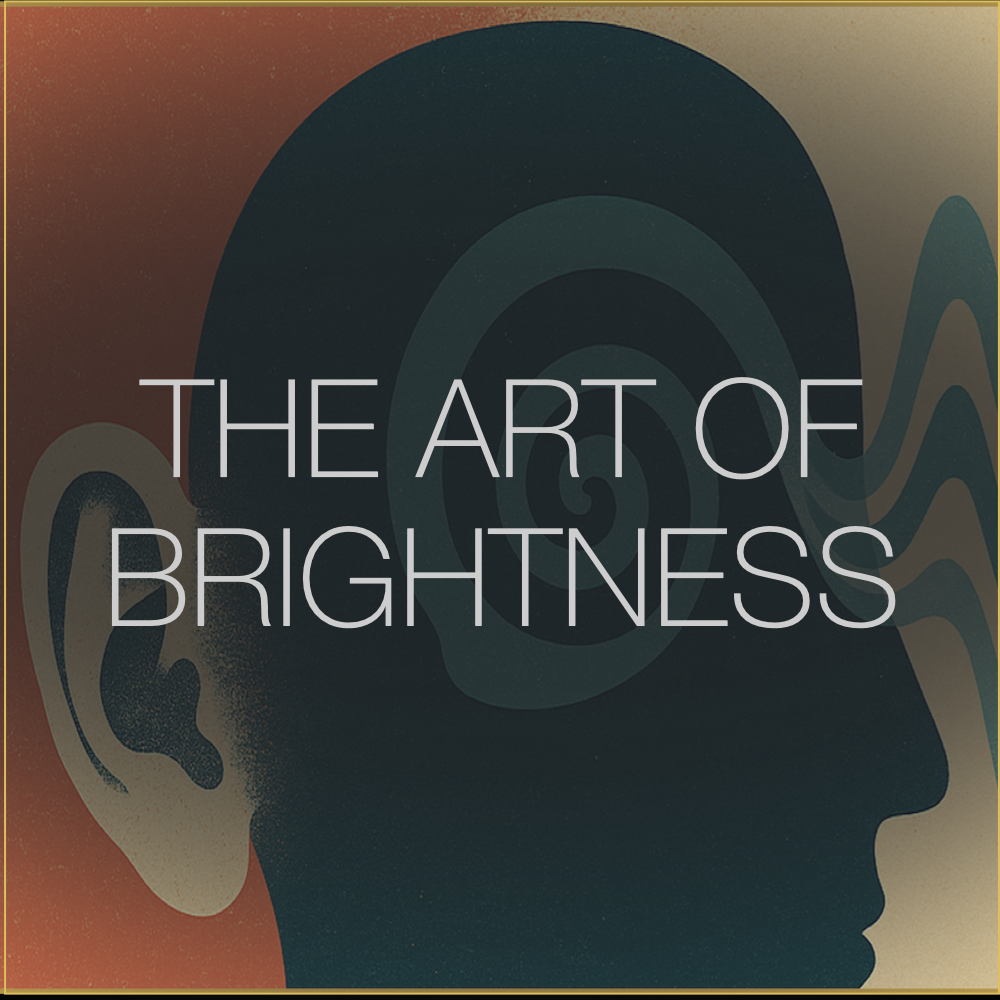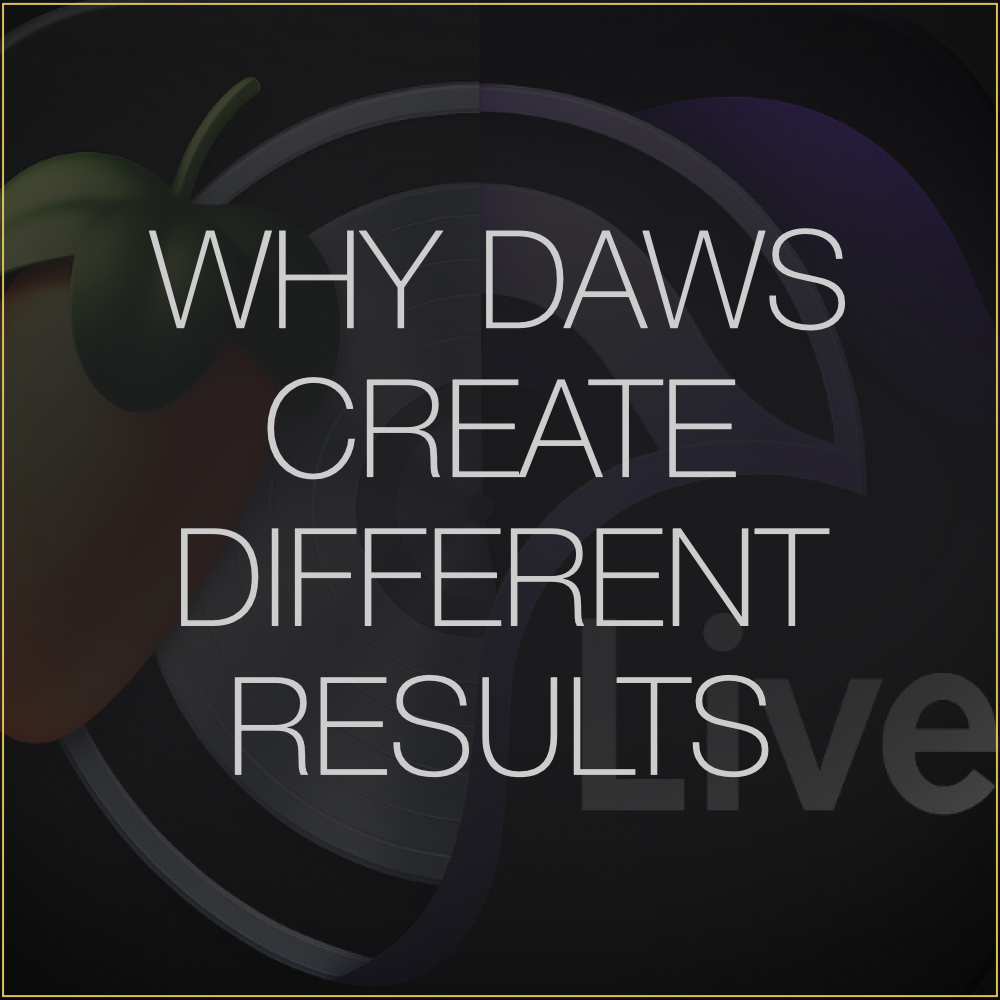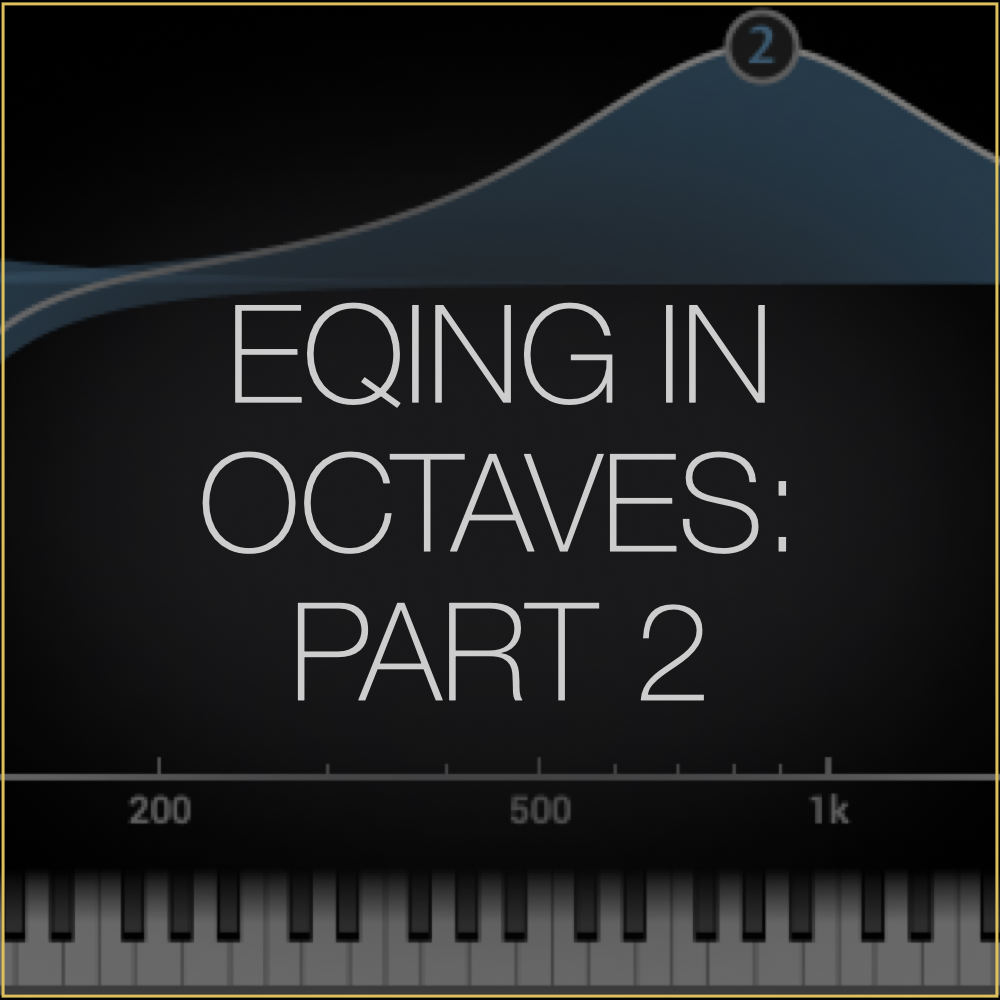EQing in Octaves: Part 2
Last week, we explored how thinking in octaves can simplify your EQ process, making it feel more musical and intuitive. Today, we’ll take that concept further by dividing the 10 octaves into 5 key frequency bands—low, low-mids, mids, high-mids, and highs—and discussing how each band shapes our perception of sound. This week, we’ll focus on the first three bands and cover the remaining ones next week. Conveniently, each of the 5 bands spans roughly two octaves. Let’s explore them.
Lows: Octaves 1 & 2 (20–100 Hz)
As mentioned, the lowest frequency we can hear is 20 Hz. The lowest musical note we can hear is a low E, one octave below the E on an electric bass, at 20.6 Hz. This means the two low-frequency octaves range from 20 Hz to about 80 Hz. However, in practice, each band spans roughly 2.5 octaves, with some overlap between what is considered a low band and a low-mid band, or a high-mid band and a high band. In practice, the low band is commonly defined as 20 Hz to 100 Hz.
Let’s take a closer look at the low band and its role in most popular music. As you can imagine, in rhythm-section-oriented popular music, the kick and bass dominate the fundamentals of this band. I like to think of it as the foundation on which a balanced mix is built.
One approach I sometimes use is to solo the kick, bass, and vocal to evaluate how the power of the low end balances with the energy of the vocal. It’s a quick and effective way to judge the level relationship between two fundamental parts of modern music: the power of the bass and the diction as well as the message of the vocal. This method serves as a great temperature gauge, helping you reassess vocal effects, the relationship between low-frequency instruments, and how much space is left for the rest of the instruments to fit cohesively into the mix. While I am often skeptical of making any major decisions about a mix while in solo, listening to an acapella and bass has provided me with useful perspective.
The graph below shows the average spectral balance of #1 hits in the US and UK from 1950 to 2010 (AES, 2013).
In most popular music mixes, low frequencies dominate the spectrum due to the interaction between the bass and kick. The frequency balance in these #1 hits is anchored by energy centered around 80 Hz, with a sharp roll-off below 60 Hz. Higher in the spectrum, the balance follows a linearly decaying slope of approximately 5 dB per octave between 100 Hz and 4 kHz, with progressively steeper attenuation at higher frequencies. The balanced power of the low frequencies plays a crucial role in your limiter's performance, the perceived loudness of your track, and the dynamic response of your mix on consumer playback systems.
Many streaming services use K-weighted filtering (part of LUFS measurements) to mimic how our ears perceive loudness, focusing on frequencies where human hearing is most sensitive. This filtering de-emphasizes deep sub-bass frequencies, allowing producers to push sub-bass louder without significantly increasing the impact of volume normalization on a track’s loudness on streaming platforms. However, excessive deep low-end can compromise a limiter's ability to make a master sound loud and present before loudness normalization, making it a delicate balancing act to set the right amount of low-end energy.
Key Tips
Focus on dialing in the relationship between your kick and bass within the first and second octaves. Typically, the kick will dominate one octave while the bass occupies the other. Which octave each instrument primarily occupies depends on the production style and the song itself.
Adjust the low end in relation to the rest of the mix by using a low-frequency shelf that evenly boosts or cuts both low-frequency octaves.
Cut sub-bass frequencies below 25 Hz to clear up your mix and increase headroom. I prefer using low-frequency shelves over high-pass filters (HPFs) because they are more transparent and avoid phase shifts or added harmonics. Even though K-weighted filtering discounts low frequencies, these still consume the most energy in your mix and can cause unpleasant artifacts in your limiter, especially in over-compressed masters.
For a deeper dive, check out my low-end balancing blog post linked below. In that article, I outline a simple three-band strategy for managing low frequencies in your mix.
Low-Mids: Octaves 3 and 4 (100–400 Hz)
The low-mids are where the fundamentals of chords and melodies, the body of drums, and the chest of a vocal performance reside. Since the fundamentals of most instruments and vocals often live here, it’s easy for frequencies in this range to pile up. Be cautious, though—cutting too much in the low-mids can make a mix feel overly scooped and lacking in body or wholeness.
When I refer to the 'fundamental' of an instrument, I’m talking about the primary notes that make up a chord. For example, on a piano, A440 (440 Hz) is the fundamental frequency of the root note in an A minor chord. The minor third, C, is at 523.25 Hz, and the perfect fifth, E, is at 659.26 Hz. When you examine this chord on a spectrogram, you’ll see that the fundamental frequencies dominate the energy. In contrast, the subharmonics below and the harmonics above—which shape the timbre of the sound—contribute significantly less energy.
A common production mistake is stacking too many instruments in the same frequency range. When chords and instruments with fundamentals in the same range are layered, it can cause a significant buildup of density and loudness in the low-mids relative to the rest of the mix. This is why songs with fewer layers of instruments often result in a louder and clearer final master. With less low-mid frequency duplication and buildup, the energy of the production feels more balanced and open.
This is also why many producers and mix engineers embrace the concept of “production through reduction.” Simplifying and minimizing the arrangement of instruments occupying the fundamental frequencies allows each element to breathe, aligning with the human ear's preference for fewer competing elements at once.
Instead of boosting the top end to make an instrument sound brighter, try cutting in this range and raising the instrument’s overall volume. This approach preserves the integrity of the high frequencies, avoiding any potential artifacts from processing, while simultaneously reducing weight in the low mids. With this method, you’ll often achieve a cleaner and more natural result.
Exploring Alternative EQ Approaches
Similarly, I’ve experimented with working in powers of 10 instead of the traditional octave-based system we are currently discussing. While octaves function by doubling or halving a frequency, this approach involves making strategic adjustments at frequencies related by factors of 10.
For example:
To make 2 kHz feel more energetic, cut at 200 Hz and raise the volume.
To make a mix feel warmer around 400 Hz, use a wide bell cut at 4 kHz and raise the volume.
This approach is effective because it indirectly alters the balance and perceived energy of a target frequency without applying any processing to it.
Mids: Octaves 5 and 6 (400 Hz – 1.5 kHz)
The midrange, traditionally spanning 500 Hz to 2 kHz, is where the core frequencies of most instruments converge, making it the area where EQ adjustments have the greatest impact on an instrument's size and presence. The upper midrange, aligned with the Fletcher-Munson curve, corresponds to the frequencies where our ears are most sensitive—earning it the reputation as the 'size control' for a mix.
Frequency masking often occurs in this range, and pushing the mids too far forward can make instruments feel overly aggressive or 'shouty.' Additionally, overemphasizing the mids can lead to issues with loudness normalization, causing your mix to sound smaller compared to others.
For example, a gentle, wide boost around 1 kHz can help a vocal stand out, while cutting a competing instrument in the same range can unmask the vocal. If you push this range beyond a natural balance, it will cause loudness measurements to register the mix as louder, resulting in lower playback levels.
Practical Application
For Larger Vocals: Boost with a wide bell around 1kHz or 1.5kHz. Think of this as a size knob for anything in your mix. If you want something to feel bigger (and it’s not overly compressed), boost here, and it’ll grow.
For mastering, use mid-side EQ to push the vocal forward or pull it back. Solo the mid channel and sweep through the frequencies to identify the spot where the vocal stands out most relative to the other instruments. This range might not always be where you'd expect. Focus not on the vocal's fundamental frequency but on the range where it feels most separated or independent from the other sounds in the arrangement. Once you find it, adjust the gain in that range to subtly change the vocal's placement in the mix.
The lows, low-mids, and mids form the backbone of your mix, shaping its depth and power, warmth, and overall presence.
Next post, we’ll dive into the high-mids and highs—where clarity and energy live. These ranges can bring your mix to life or make it harsh if not handled carefully. See you then!
Have questions? Just hit reply, and we’ll get back to you. You can also tag us on instagram—we’re always happy to connect!
Be well,
Ryan Schwabe
Grammy-nominated and multi-platinum mixing & mastering engineer
Founder of Schwabe Digital




























